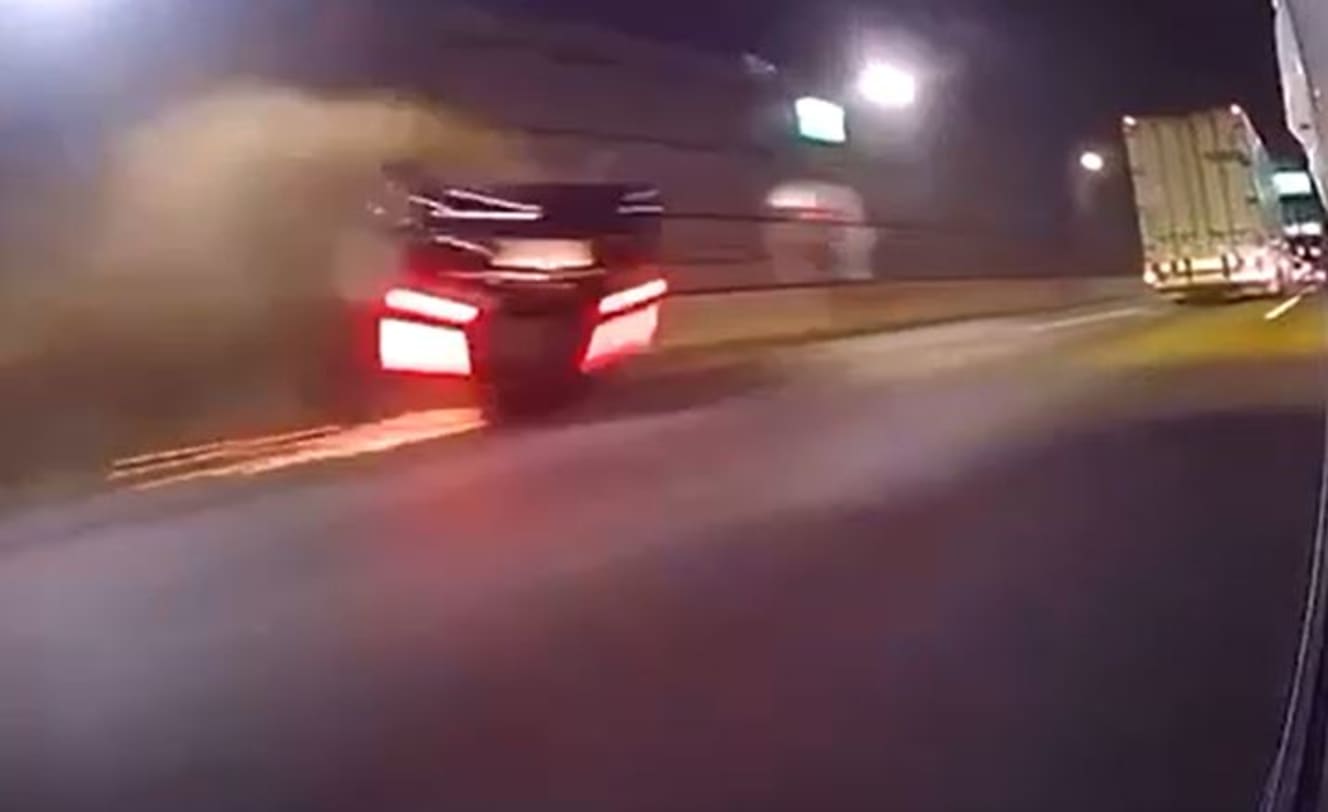Shocking Video of the “Moment of Accident” that Killed Two Taxis on the Tokyo Metropolitan Expressway Raises Questions about the “Structural Problems” of the Taxi Industry.
The windshield was wrecked, the hood was severely damaged, and the surrounding area was littered with vehicle parts and pieces of metal from the tunnel that had been peeled off in the collision.
At around 7 p.m. on May 11, a cab overturned in the Tamagawa Tunnel on the Bayshore Route of the Metropolitan Expressway. Two people, the driver and a passenger, were killed in the accident. A reporter for a national newspaper explained the accident.
The taxi hit a curb in the tunnel and collided with a wall. The impact caused the cab to spin several times. Since the driver had no noticeable external injuries, it is believed that he died of illness rather than an accident. The deceased passenger was a VIP, Ichiro Matsuo, 61, president of Idemitsu Tanker, a subsidiary of Idemitsu Kosan, and the incident attracted a great deal of attention.”
FRIDAY Digital obtained a video of the accident from a source in the cab industry.
The video shows that the cab in motion suddenly lost control and crashed vigorously into a curb. A large number of vehicles were passing near the area where the cab overturned, and it is fortunate that the accident did not lead to secondary damage. One wrong move and many cars would have been involved. And the location was in a tunnel. It would have been a catastrophe.

Some in the cab industry are asking whether the accident can be dismissed as a mere fluke. A representative of a Tokyo-based cab company quietly confided, “The driver who caused the accident was healthy.
I heard that the driver who caused the accident had high blood pressure every time he had a medical checkup. If he had died of illness while driving, there is a strong possibility that he had a myocardial infarction or a cerebral infarction. The impact of this accident on the industry has been significant, and there are whispers that it may lead to changes in laws regarding driver health care.”
Why were drivers with health concerns left unchecked? The representative of this cab company explains, “The background is the recent driver shortage.
Since the COVID-19 crisis, there has been a chronic shortage of drivers, and all the companies are trying hard to recruit new drivers. However, the hiring cost per driver has skyrocketed to 400,000-700,000 yen, so hiring has not increased. The impact of the lifting of the ban on the Japanese version of ridesharing is also being felt on the frontline. In some companies, managers are taking on the role of rideshare drivers due to a lack of manpower. With a shortage of personnel for labor and safety management, some companies have begun to ‘hire drivers even if they have to turn a blind eye to some health problems. I feel that there is a structural problem in the cab industry behind the accident.
When we contacted Subaru Kotsu, the company to which the driver who caused the accident belonged, to confirm the facts regarding the driver’s illness, the company replied, “We would like you to contact Nippon Kotsu, our group company. When we asked Nippon Kotsu again about the driver’s health condition, they responded as follows.
However, the details of the driver’s health condition are personal information of the driver, and we have not obtained the consent of the bereaved family. We are unable to disclose the details of the health situation at this time, as the cause is still under investigation.
He then responded about measures to prevent a reoccurrence.
Nippon Kotsu has been working on employee safety education by visualizing driving data (driving time, speed, number of sudden acceleration and deceleration, etc.), conducting training using drive recorder images, and conducting driving operation training. (In September 2010, the “Health Management Project” was initiated mainly by the workplaces to strengthen management of SAS (Sleep Apnea Screening), blood pressure measurement, brain checkups, and so on, and we are in the process of extending the project to all group companies. In response to the accident, the following measures have been immediately implemented for all employees and crew members at the concerned worksites.
Hold emergency traffic safety training sessions
Sharing of information and reminders of traffic safety at the opening roll call
Reconfirming the results of each employee’s health checkup
Reconfirmation of each employee’s work status and break time
The Nippon Kotsu Group also holds an emergency meeting attended by all group companies to share information, remind all passengers to comply with traffic rules, and reconfirm and thoroughly manage the aforementioned “Health Management Project” management items.
According to the Tokyo Kotsu Shimbun, an industry newspaper, there were eight fatal accidents involving cabs and hired cars in Tokyo in FY2011. Cab accidents themselves have been on the decline year after year. Still, any sudden accident will bring a severe scrutiny to the cab industry, which is committed to safety and security. There is no doubt that even more thorough safety standards will be required.
